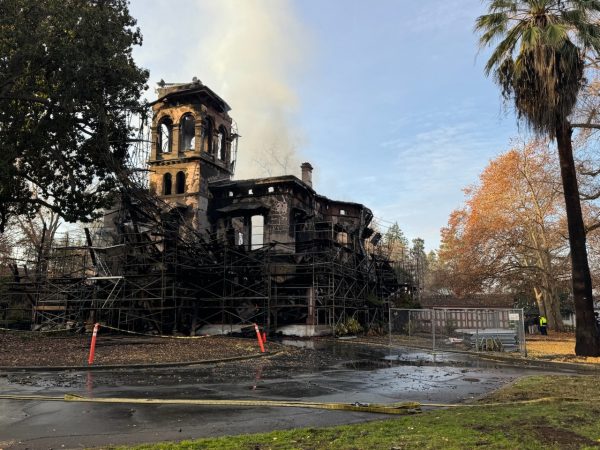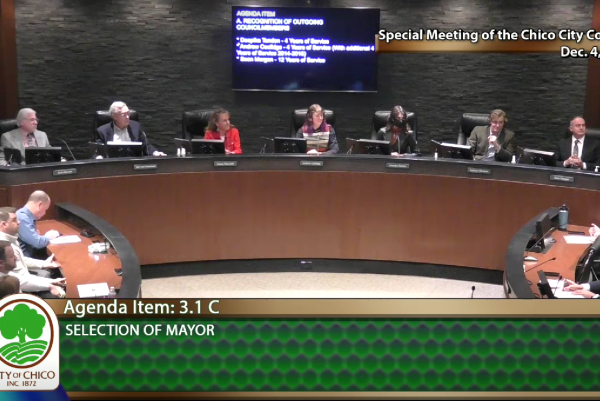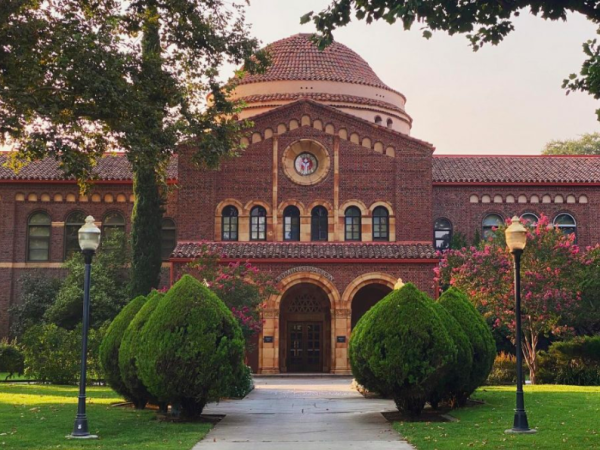Chico State holds annual sustainability conference online to discuss resiliency, city planning.
Chico State students, faculty and staff continued to host the 15th annual “This Way to Sustainability,” conference online on March 26 and 27 after COVID-19 restrictions moved the university to close earlier this month.
The 2020 climate discussion called attention to maintaining resiliency in a world that is quickly changing. Hosting speakers ranged from Chico committee chairpersons to self-made CEOs.
Attendees garnered information relating to efforts made by Chico State to create a sustainable community and potential plans that may be considered by the university or at the city-level.
The first day of the conference introduced sustainable practices such as leadership, regenerative farming practices and environmental justice, while the following day hosted events focused on planning the Chico City Council’s efforts to fight climate action and sustainable food systems.
Nikki Silvestri, founder of regenerative company, Soil and Shadow, kicked off the event by shedding light on the ways her organization maintains economic and environmental systems alongside human relationships.
“We use soil as a metaphor and as actual systemic intervention,” Silvestri said. “We work with a lot of soil folks and regenerative agriculture folks and we do a lot of leadership development and organizational development based on principles of soil fertility.”
Silvestri moved her presentation to discuss the importance of maintaining inner resilience in order to relate external resiliency.
Chico State faculty Cindy Daley and Tim LaSalle, co-founders of the university’s Center for Regenerative Agriculture and Resilient Systems, continued the sustainability conference into the topic of regenerative agriculture through the transfer to regenerative farming practices such as crop rotations, managed grazing and more.
LaSalle entered the presentation focusing on the loss of fertility in soil, where he explained that the rate in which soil is lost has reached the same proportion of the pre-Dust Bowl era, except at a global scale.
“We know that in essence we (the Northern Hemisphere) are the biggest emitters per capita in the world…but those mostly affected will be those in the Southern Hemisphere, and I see that in Africa where farmers have seen the effects of climate change on their crops,” LaSalle said.
LaSalle continued to explain that climate inaction played a critical role for him and Daley to work with other faculty to open the CRARS, to not only breed resilience of crops but to turn the non-regenerative culture around.
“We’re on the bleeding edge in many respects,” Daley said. “We work with all of production agriculture and there are some people who don’t see the problem, and we really need to accept the fact that we have issues before we design systems and programs to work our way out of them.”
Daley instructed varieties of farming systems such as managed grazing, systems that utilize a diversity of tillage and the preparation of soil for crops.
“We’re using a composter and animal manure as a way of adding nutrients and biomass back into the system to feed the trees,” Daley said.
The final day of the conference followed with another strong start as Cheri Chastain, Chico State’s campus sustainability manager and chair of the City of Chico’s Climate Action Commission, shared the history of the city’s climate action plan.
Chastain began by introducing the city’s journey with a sustainability task force in 2007 when then mayor signed the Mayors Climate Protection Agreement to 1990 carbon emission levels for the city of Chico. The task force formed to make the first climate action plan which would provide a roadmap to meet the carbon emissions level that the mayor signed onto.
Chastain continued to explain that the task force lost focus and became dedicated to all things sustainability before disbanding in 2013 to be reformed that year into an exclusive purpose of implementing the climate action plan of 2012. Finally, in December of 2019, the task force reformed into a commission for the city of Chico which gave the group the power to report directly to the city council and work with a consultant to update Chico’s climate plans to new goals.
While the commission is currently still writing its goals, Chastain notes that once the plan is implemented, the group plans to work collectively with other city commissions, stakeholders, citizens, business and other interested organizations.
Chastain notes that emissions from the 2018 Camp Fire have yet to be fully reported, but with 240 miles of carbon sequestering forest destroyed during the fire and an equivalent to one week of all California transportation emissions in the fire, the numbers will likely show a negative trend in emission reduction.
“Last spring our city council declared a climate emergency which gave a higher sense of urgency to the issue of addressing this issue and working to mitigate and sequester what we can,” Chastain said. Shortly after the council declared the emergency, council member Karl Ory and Vice Mayor Alex Brown wrote the City of Chico’s promise of the National Green New Deal, another long term plan toward sustainability.
Chastain included that the efforts for reporting solid waste were limited due to only having access to reports from waste-haulers and landfills. While Chico City Council continued to fight for more resources, Chastain added that the city has been planning to invest in a composting infrastructure in Chico as well as at Chico State’s with a composting coordinator.
Other blindspots reported included the limitation of tracking greenhouse gasses caused by vehicles only through fuel sales. This method loses the ability to track sales of private transportation or essential, commercial vehicles.
Chico State’s Center for Healthy Communities Program Manager, Aaron Kunst continued the conference by discussing food systems and the economy. He localized the topic to students who receive CalFresh, from the Supplemental Nutrition Assistance Program — a program used to buy food at markets and food stores.
“College students are change makers and this allows them to lead the way on how they support local food systems—especially if they have CalFresh dollars because they can redirect those dollars however they want,” Kunst said.
Kunst explained the ability students have to change the behavior of friends and family. With many students being first-generation college students, family members look to students for advice and resources to take advantage of.
As farmers markets are another staple for CalFresh benefits, Kunst dove into the direct consumer-to-farmer relationship, which cuts costs for farmers.
Finally Kunst factored resilience for food systems as the severity of climate change may hinder reliance on larger organizations or organizations when tragedy hits.
Kimberly Morales can be reached at [email protected] or @kimberlymnews on Twitter.







